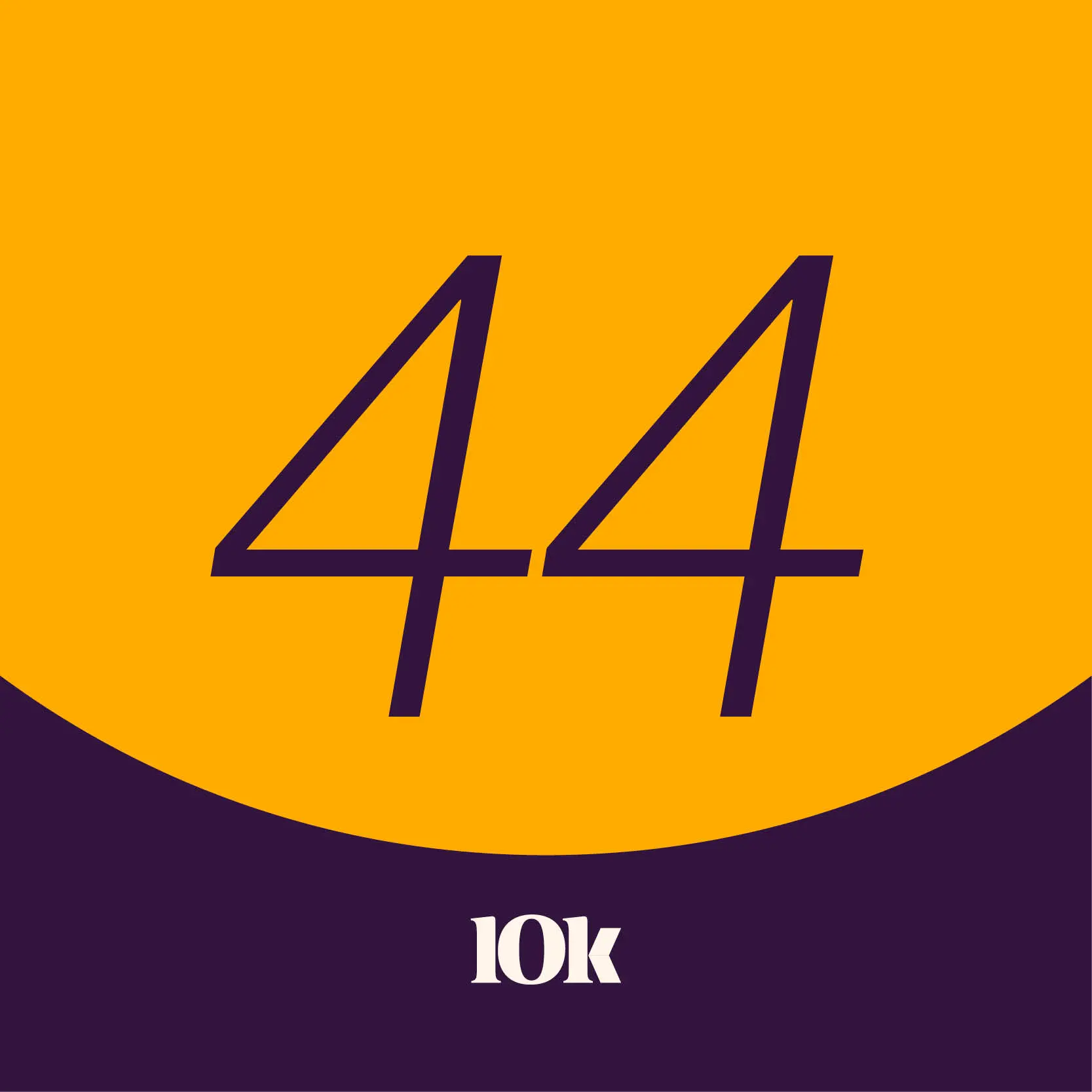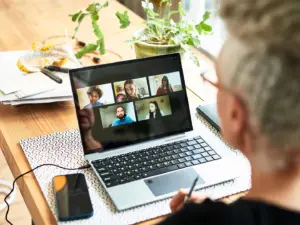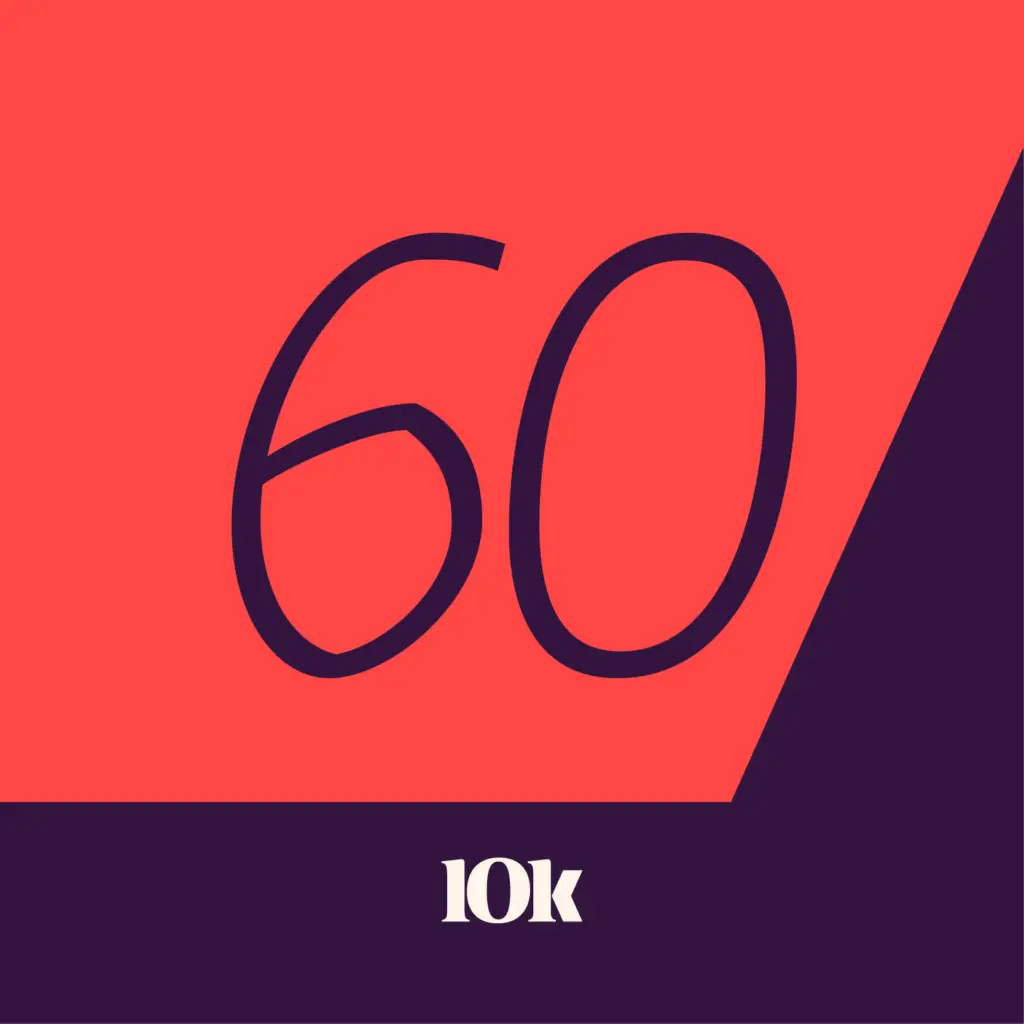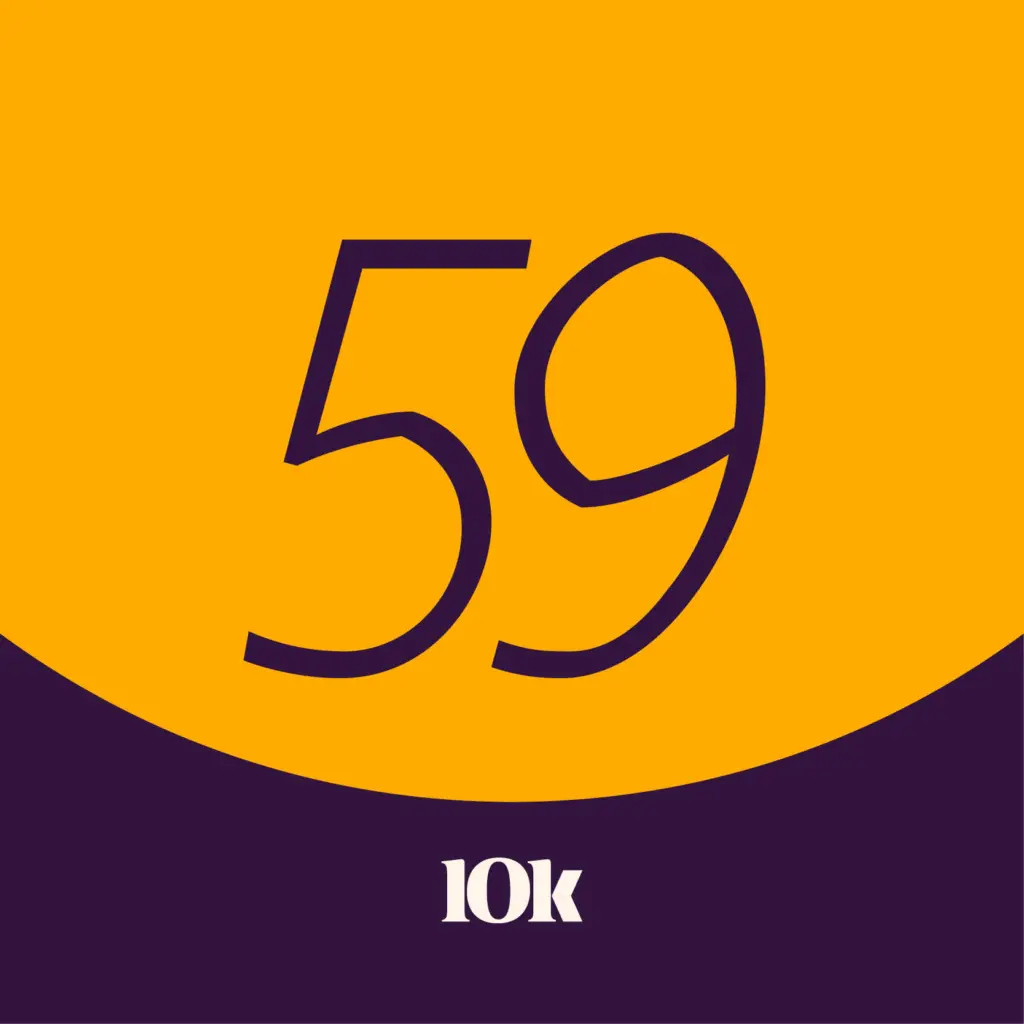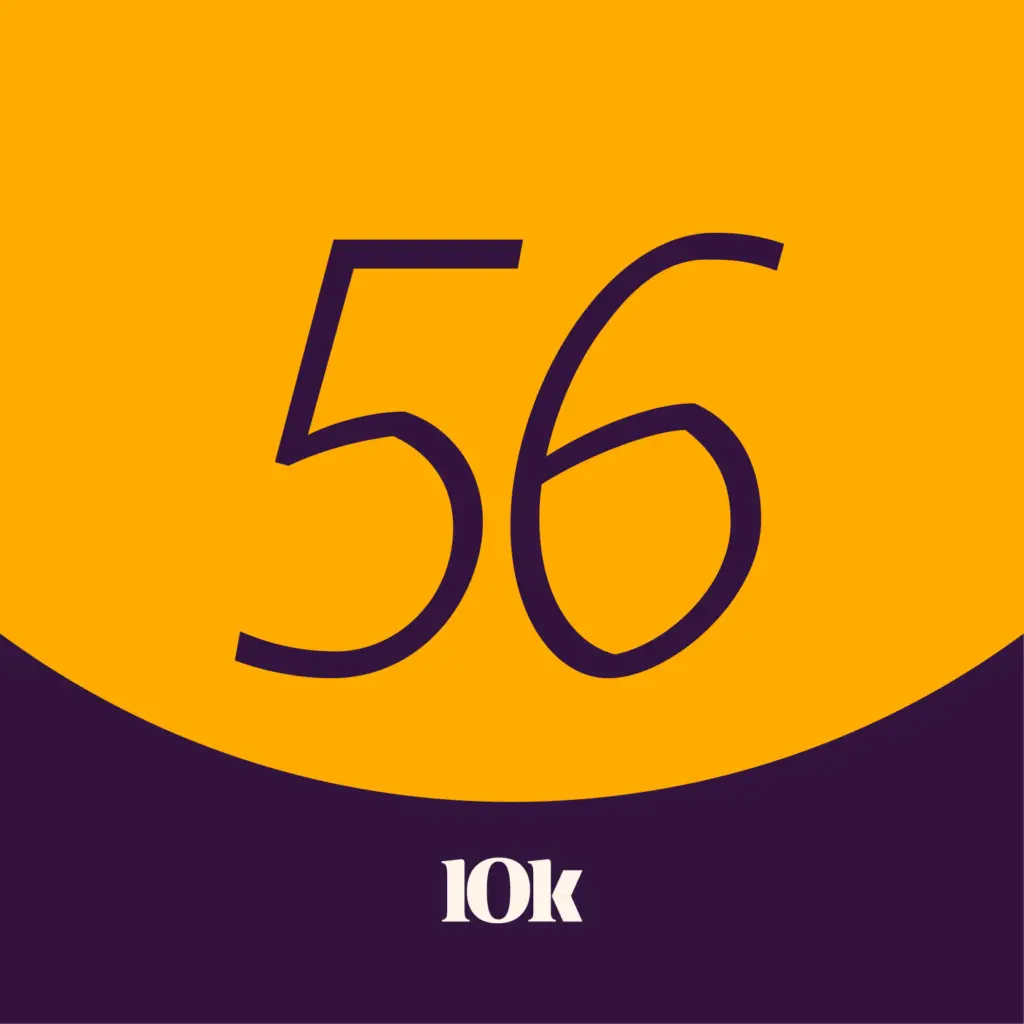Andy Van Solkema, our VP of Digital Strategy and Experience, looks into his crystal ball and offers his take on what the future of work looks like. The way he sees it, in the past, life used to fit into work. Now, work fits into life. How can people set up time to be creative and time for deep work? Does Andy see the work from home trend continuing? Tune in to the episode to find out all of this and more.
Enjoy!
This podcast content was created prior to our rebrand and may contain references to our previous name (OST) and brand elements. Although our brand has changed, the information shared continues to be relevant and valuable.
Episode Transcript
Kiran: Welcome to Ten Thousand Feet: The OST Podcast. I wanted to take a moment to introduce myself. I’m Kiran Patel, Senior Content Marketing Strategist at OST. I joined OST as a content creator in August of 2019. I’m a writer, former journalist, media lover, and believe it or not, I still subscribe to and read the newspaper.
I focus on spreading awareness of OST and what we do. I’ve written about our Epic in the Cloud offerings, our work with Traeger grills and even a case study on Little Caesars. I love food, cooking, social media, and reading. I spend time running around the house, chasing my toddler and snuggling my newborn. That’s me, in a nutshell.
Today’s guest is Andy Van Solkema OSTs VP of Digital Strategy and Experience. Andy is focused on bringing customer perspectives and innovative trends into shifting digital organizations through OSTs practice, vision and digital services. He does so by infusing a human-centered design mindset with OSTs deep technology experience.
Andy has been a guest on our show before, and we are glad to have him back. Andy, welcome.
Andy: Hi, thanks for having me.
View Full Transcript
Kiran: Absolutely. So lots to talk about. Let’s just jump right in. Today we are going to be talking a lot about the future of work, what this means for employers, the individuals at hand, and really just for all of us in general, it’s a topic that we keep hearing about. We’re going to keep hearing about it. We cannot avoid it, especially in these past couple of years that we’ve been going through. Let’s just jump right in and talk about trends that you’re seeing. As you look in your crystal ball and look to the future, Andy, what do you expect to be the major disruptions for employers in the next 10 to 15 years? And how should employers pivot to adapt to these disruptions?
Andy: I can’t speak for every employer. Where they came in beginning of the pandemic to where they’re coming out of the pandemic is probably an acceleration of where they were headed.
But the last 18 months have accelerated a lot of new perspectives on the ways that work could look. Aside from the recent mandates, along with technical enablement, it allowed us to work through the pandemic, but it also allowed us to prototype. And I think that’s what’s really interesting about the last 18 months to two years, it was a future out of necessity.
I think the future really will be a blend of the best of what was prior to the pandemic. Collaboration, culture of place, serendipitous interactions with focus on deep work. Those are items that come to mind that are really time and place oriented. So they really kind of speak to, we have to meet somewhere, we’re going to use the office in those ways. But I also think about ideas of being able to set up time to be creative and to work through those tasks and those things that you do heads down.
And I think that one of the biggest things that we’ve been talking about around here is the idea of how life used to fit into work. And now work has the ability to fit into life and what comes along with that. Along with the needs you have for a specific task or a specific aspect of your job. There’s a ton of clues there.
Obviously this is a very human-centered approach that we could take in, in pulling out those clues, but that define the different constructs of work, the idea of nine to five, the idea of punching a clock or the way we use our time in a uniform way. I think that can be challenged.
Kiran: We talked about work from home. I know you just brought it up and the past couple of years has really just quickened this transition. Looking ahead, do you see this trend continuing? Why or why not?
Andy: Yeah, it’s a really interesting question. We can’t deny how fast things came at us in the last 18 months. But as I look at how things change, you have order, then you have disorder and then you have reorder or you have a path you’re on that you seem– that seems pretty fixed and then crisis and you change.
And then there’s chaos coming out of that change. And then there’s, recharting in that path. I think where we are, specifically around the pandemic, not in relationship to where companies are in their change journey, because they could have been in some aspects of crisis themselves going into the pandemic and then this accelerated it.
I think, as a society, we’re still in the crisis mode, we’re trying to figure out and make sense of what is, and what’s happening. Obviously urgency leads to action, which leads to innovation, necessity being the best friend of innovation. But as we move to chaos, I do see the pace of things picking up.
And there’s some really key factors to why, in terms of we just experienced new behaviors and new ways of living and new ways of doing things. Those are starting to challenge the norms of what products and services we buy or consume or a part of. Which then informs new ways for businesses and organizations to respond.
But we’re still in this liminal spot of that change. Once those certainties start to break free in terms of we’re getting back to normal, whatever quote unquote normal is, I think we’ll start to see change continue to increase speed.
Kiran: You and I have talked about this before, and I think it’s really neat so I wanted to expand in on this.
There have been a lot of changes in the individual and how individuals work. What kind of paths to employment are most practical and things like that. As you look at job seekers and how they’re changing their approach, how do you see that changing? I mean, we can talk about the gig economy here. Just people’s definition of work has continued to change. And just want to know your thoughts on that.
Andy: I see that question twofold. I see it as a very personal question. What do I need in my personal journey, my life, where I’m going in my career, where am I on my journey? What do I need? What other obligations do I have in my life? And how do I construct my work, my career in that place?
Where do I get work done best? What do I need when I’m writing versus when I needed to collaborate? So technology, place, all of those things come into play. But then I also see it as a societal. And here’s what I mean by that. I think when you look at, at some of the generational trends, the ones I grew up with where my dad had a job that he was at for 29, 30 years, and then he retired and that was the expectation.
But now, and recently I was driving down the highway and I saw an ad for Amazon. They’re looking for people for distribution centers. And there’s a really good video on this. You can find it on YouTube. But the billboard said, choose your shift, choose your hours. That’s different than how I thought of a job growing up in kind of a blue-collar mindset.
You’re there on time. You work your shift, you go home. And I don’t know exactly all the details of what they mean by that, but the sentiment alone, choosing your hours and choosing your shift, puts the control in your world to be able to define it. Additionally, the ad on YouTube was someone who is looking out in their career and wanted to go to school for nursing.
Amazon positioned it as a way for them to go do this job because you can have some flexibility to grow into that. They’re positioning the role as not a lifetime role. Not something you’ll stay there forever, but as a part of life, a season of life, and they’re going after a certain season of various people’s lives.
Now I don’t think that’s a fixed thing. I think there will be some people who love the job and are there for 20, 30 years. But I think that commentary alone makes it a very personal, as well as societal change that is affected by the values of our generations, you know, from the Boomers to Gen Xs, to Millennials and Gen Zers.
Kiran: That’s fascinating. I think you are touching on my next question, which is what other societal changes do you foresee as necessary to support a lot of these changes in work. We’re seeing employers realize that they have to meet people where they are, and I don’t think that that’s really going to go away anytime soon.
Andy: Yeah, I have a handful of patterns that I’ve just been thinking about in terms of coming out of the post pandemic era, which are informing change or informed by change.
I think there’s a pursuit for answers. Where do we fit? How should we be making up for lost time? Hey, the pandemic set us back or did it really, or did it accelerate? I think we’re seeing this now in terms of the way people are contextualizing vacations in their life, but there’s this push for leisure. I think a couple other that are really interesting to me is the idea of how boundaries are starting to fade away.
For instance, the way I used to consume content was I would flip on cable. And I would go to the set of channels I had, which were more than I really needed, but they were always there and they were always fixed. I paid one bill. Now I open Netflix, Hulu, Amazon, Apple TV, and I choose the content based on the quality, but from different providers.
And I have to choose then a provider to pay. And there’s a blurring of lines in terms of where is the content coming from? And now you’re seeing bundles come together and things like that. So from a boundary standpoint, there’s more of a hybrid approach to in this case content. But I think that’s also true for careers.
Are there more or less boundaries now because of technology and because your ability to have a day job, maybe have two jobs, also do a side project and have your own podcast. I think there’s less.
The second one would be experimentation. I think how we learned to make bets, how we learn to do experiments is really based on how people feel empowered to jump into a new platform or within companies, how their people are empowered and how they’re willing to test markets with products, with services, with new models.
I think there’s going along with the initial one about hybrid the pro-sumerism space that’s happening, content creators, influencers. That might just be the tip of the iceberg of what’s possible in terms of people creating value in the world and maybe even earning from that. I think it’ll be interesting to see how that involves.
Then I think there’s the gig life, which I kind of hit on in terms of having multiple things you’re involved in. And from a company standpoint, I think a thing that’s really come out of all of this is continued authenticity. Branding has shifted from in the fifties being this hype advertising to then I’m a part of a brand and now being actually part of my social identity.
And I think that’s a huge piece of how companies and individuals are going to continue to be and act in the world.
Kiran: This is great. I think you’ve covered a lot of different things, but what I hear tying this all together is the reality of change. It’s all of our realities. I mean, individuals, employers, organizations, and I don’t see that going away.
It sounds like you’re suggesting the very same thing. So let’s say I’m an organization. I’m looking at the situation. How do I keep up with this? How do I stay relevant? As things keep changing and changing quickly, what do I need to know to be prepared?
Andy: There’s a concept; Strauss-Howe modern generational theory. It’s the saecculum and what they’re talking about is kind of a 20-year pattern of change where there’s high change, there’s an awakening, there’s an unraveling, there’s a crisis. I think we’re coming into a period of high change. And because of that, I think organizations have to kind of look at where they currently are in their ability to handle change.
Do they have the core processes for scale, but are those processes limiting to their ability to pivot? Are they valuing and investing in some of the things that will help them change? Are they making innovation bets? And a lot of this is written out there, you know, in terms of where organizations are pivoting and using agile and using product development methodologies, and things to be part of the digital business model and digital economy.
But I think that being able to understand where you currently are and what your limitations are and that what got you to this point may not get you to the next point and being honest with that is where I would start. And it’s where we start with a lot of our customers, it’s trying to understand.
And maybe understanding is actually a year-long initiative to put something out in the market to learn or to try to develop a product that you learn from. And that’s okay, you know, that’s part of the process. But there’s two things going on there. There’s the putting the innovation out there and then also learning how you organizationally can support it and run it. For organizations that have started post 2000, post the internet era, they tend to have more digital tendency, software style business models. For organizations that were started way before the internet era, the founding of the internet, they’ve got business models that have characteristics back 50, 75, a hundred years. How are those being addressed to be able to allow that to happen?
And that’s a big thought and a big idea, and there’s a lot rooted in it. And I recognize that. But being able to have an honest conversation with where you are today and what areas are risks and what areas are opportunities, I think is a really good place to start.
Kiran: And I’m sure from where you sit and what you see, that you can assure people that are listening, that they’re not the only ones going through this, that we’re all having these similar conversations and that that’s okay. It’s really about realizing, recognizing, and noticing and doing something about what you discovered, right?
Andy: Yeah. No, absolutely. And the best thing that I can see in terms of an action point is doing something just that, trying to innovate, experimenting, trying new processes, new systems, new ways of thinking about those things and knowing that they are just that, that they’re tests that they’re bets. The value of them is not always in the ROI, it’s also in the return of knowledge. And being able to use that information to build the roadmap and allowing yourself to pivot that roadmap as an organization or as a product or whatever you’re trying to achieve I think the idea of experimentation and learning, I wish there was a hard metric for it. I’ve seen some organizations measure it well, but I think that’s an incredibly valuable piece of the equation as we move faster and faster.
Kiran: I like that. That’s great. We’ve talked about change and the speed of it. And as you consider that and look ahead, what is something that you are optimistic about as far as the future of work is concerned?
Andy: Well, I’m always optimistic. Well, I shouldn’t say always, but I’m a pretty optimistic person.
I think that what is hard is sometimes a disguise for opportunity. When I think about what we’re going through right now, I think about the level of change that’s imposed on people and in companies, I see a huge opportunity. I see a huge opportunity to look at the systems that we have in our world and the business models we have in our world and challenge them and to make them better. And not because they’re bad. In fact, they served a purpose for a long time. They served a purpose at a certain point in time. But if we think about it as a different point in time, those models can then be challenged without being too sacred.
And I think as we move forward, there’s going to be a lot of reshuffling. There’s a bit of a land grab going on in terms of who you buy your groceries from even, and where you buy your car. And all of these industries are being disrupted, but I think we have to persist. I think we have to stay moving forward. Chaos sometimes causes organizations to retreat, and I would say just the opposite. Dive into those experimentations and those tests and start to challenge your own business model and do it through the work. It won’t happen in the boardroom as much as it will through the work.
Kiran: Awesome. I think there’s a high level of listening that’s required to be successful here too. And I think organizations realize now more than ever, they need to be listening. They can’t just stay in the boardroom like you suggested. Customers want whatever they want now and they want it fast. And I think we have to keep listening as we go forward. Find success.
Andy: Yeah, absolutely. For organizations. I think of two key areas to listen. One is obviously to your customers. Well, I’ll restate it this way.
The initial step is in transforming our customer relationship and our data relationship. So when I say customer relationship, most of us can understand, “Wow. Now there’s an app for that.” Or I engage differently or I have an account with that company and I can text them and customer service texts me back. Some great services.
Those I think we can understand better cause we’re all consumers. On the data side, the transformation is complex. The architecture, the cloud environment, the on-premise data environment, all of those things have to support the data transformation. So when I think about listening, I actually think about real-time value from customers and what they’re experiencing.
And I say experiencing, instead of saying, because I think it’s valuable for the qualitative aspect of research to understand what the experience is like, but also listening from the data we’re receiving. And if we’re not getting the right data, if for some reason, our system is not architected to be able to get the right data to the right people, we’re not listening as an organization.
So what listening devices do we actually have in terms of roles and people and processes and tools in our organization that actually act as that. I think it’s an interesting question to ask yourself and then to be able to act on and say, well, let’s move forward to create a better listening device, quote unquote, for this aspect of our business.
Kiran: That sounds like something else people listening can take away from this conversation.
Andy: Yeah, I hope so.
Kiran: Thanks Andy. Anything else you wanted to add here about this topic?
Andy: The one thing I think about is I had a high school teacher who kind of nudged me towards where I ended up in my career and graphic designer down the design path. And I can remember, I think I was a junior in high school, the one thing he said to our class that just stuck with me. I don’t know why this stuck with me is “the only thing constant is change.” And I feel like I’ve rolled that thought around in my head a lot in my life. And it’s become really, really prevalent in the last year and a half.
So if the only thing that is constant is change, I would say our ability to manage that change and be able to navigate it nimble, agile, and also the ability to discern what changes need to be made, I think it’s just really important in regards to not only being an organization but being a person.
Kiran: That sounds like that could be a good topic for a future podcast conversation.
Andy: That sounds great. I’d love to come back.
Kiran: Thank you, Andy, for being on the show today. We appreciate it.
Andy: All right. Thank you.
Kiran: OST changing how the world connects together. For more information, go to ostusa.com.
